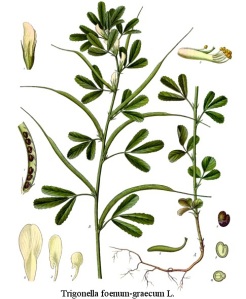
Prasad, S. R. (n.d.). ASPARAGUS (Shatavari) as Multi target Drug in Women. Retrieved from: http://technoayurveda.com/Shatavari.html
Botanical Name: Asparagus racemosa
Common name: Shatavari, Wild Asparagus, Satavar (Hindi), Satavari (Sanskrit) (Pole, 2006, p. 217)
Family: Liliaceae (Pole, 2006, p. 217)
Parts used: Root (Bone, 2003, p. 409)
Quality: Bitter, sweet, cooling (Pole, 2006, p. 217)
History: Shatavari is regarded in Ayurvedic medicine as part of the rasayana group, which translates to the path that primordial tissue takes (Bone, 2003, p. 410). Australian aboriginals used shatavari topically in a wash for scabies, ulceration and chicken pox (Bone, 2003, p. 410).
Constituents: Steroidal saponins (incl. shatavarin I); alkaloids (incl. pyrrolizidine alkaloid ‘asparagamine A’); and mucilage (Bone, 2003, p. 410).
Actions
- Tonic (Bone, 2003, p. 409)
- Galactagogue (Bone, 2003, p. 409; (\Pole, 2006, p. 217)
- Sexual tonic (Bone, 2003, p. 409)
- Female reproductive tonic (Pole, 2006, p. 217)
- Adaptogen (Bone, 2003, p. 409; Pole, 2006, p. 217)
- Sapsmolytic (Bone, 2003, p. 409)
- Antidiarrheal (Bone, 2003, p. 409)
- Diuretic (Bone, 2003, p. 409; Pole, 2006, p. 217)
- Aphrodisiac (Bone, 2003, p. 409; Pole, 2006, p. 217)
- Immunosuppressant (Bone, 2003, p. 409)
- Immunomodulator (Pole, 2006, p. 217)
- Nervine (Pole, 2006, p. 217)
- Demulcent (Pole, 2006, p. 217)
- Anti-inflammatory (Pole, 2006, p. 217)
- Anti-bacterial (Pole, 2006, p. 217)
Indications
- Promote conception (Bone, 2003, p. 409)
- Sexual debility (Both male and female) (Bone, 2003, p. 409)
- Infertility (Bone, 2003, p. 409; Pole, 2006, p. 217)
- Impotence (Bone, 2003, p. 409)
- Promote lactation (Bone, 2003, p. 409; Pole, 2006, p. 217)
- Menopause (Bone, 2003, p. 409)
- Promote appetite in children (Bone, 2003, p. 409)
- Infections (Bone, 2003, p. 409)
- Diarrhea (Bone, 2003, p. 409)
- Colic (Pole, 2006, p. 217)
Dosage & Preparation:
- Liquid extract (1:2): 4.5-8.5mL/day or 30-60mL/week (Bone, 2003, p. 409)
Contraindications
- Acute lung congestion (Pole, 2006, p. 218)
- High kapha and/or āma (Pole, 2006, p. 218)
Combinations: Combine with Ashwagandha for a uterine tonic or to promote fertility in both male and females (Pole, 2006, p. 218)
Interactions: None known (Bone, 2003, p. 409)
